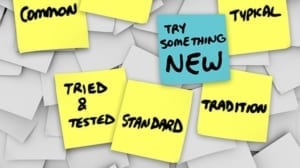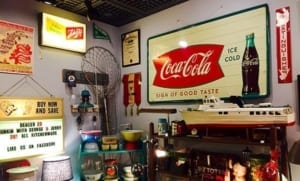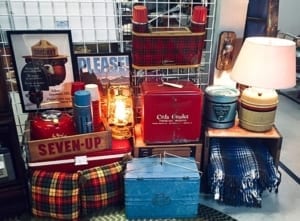February 19, 2020
Association Products & Antiquing: Lessons From My Side Gig
Written by: George Miller, M.S., CAE
As longtime collectors, my husband and I started selling vintage and antique goods around Chicagoland in 2015. Around the same time, I was taking ownership of my association’s online learning programs to complement the portfolio of face-to-face programs I’d been managing for years. As I expanded both businesses, parallels emerged.
Here are a few ways I’ve learned to tap into the antiquing mindset to market association products.
Data is everything!
As part of an organization-wide initiative, we made a concerted effort to tag and organize our online content, simplifying it based on member and customer interest. In addition, I closely tracked registration data to understand which topics and program lengths were most profitable.
This experience inspired me to utilize the power of data to track which merchandise categories (e.g. furniture, clothing) sold the fastest and provided the greatest ROI for our side gig.
But the intersection of selling goods, services and resources doesn’t stop there.
Mix it up
You want your customers to be able to find what they want easily, but to also discover other resources in the process. If you are highlighting the same three online courses on your home page, people are going to start to look past them. Avoid staleness by shifting things around and directing consumer attention toward similarly beneficial options. Following a monthly or quarterly schedule creates a routine refresh of the products you’re highlighting and restores reliability in the relevancy of your offerings.

When it comes to antiquing, I try to make time for a significant refresh every few months at our booth. Sometimes this means completely removing items, and other times we simply reorganize and present the same items differently. In both businesses, you should avoid burying popular products too deep. Know what sells and keep those resources and products a main focal point throughout transitions.
Sell, sell, sell

When it comes to any type of marketing, the appeal of the limited-time sale is here to stay. Whether it’s a vintage steal or an educational resource, getting the best deal feels rewarding for nearly anyone. We keep it interesting by using games in our vintage business, such as offering anything “green” for 20% off during the month of April … And then getting a kick out of customers who will argue that an aqua blue typewriter is really green. At my last association, we had great success running quarterly Flash Friday sales where customers could save 25% on all course fees during those 24 hours.
Think seasonal
Timing is everything. I could put out vintage plaid wool jackets in June but more often than not, they won’t sell. Similarly, if you open registration for your annual convention too early, your selling point will be overlooked or become repetitive months later. In the interim, direct your focus on products that have a loyal fan base all year long. For us, vintage swag lamps will always be in high demand. Pinpoint your hot ticket item. Is that your salary survey or an educational resource?
Tell your story
There is a reason storytelling lies at the center of marketing. People seek connection. They want to hear real life experiences and know the story behind the product. That’s why testimonials are so crucial. I once bought some Coca-Cola signs from a gentleman who had worked for a Wisconsin Coke bottler for decades. Sharing that story is a lot more compelling than “I found this undervalued at an antique store and slapped a new price tag on it.” Products always sell better with a story, but don’t be tempted to fabricate one.

Be honest about your limitations: I recently sold a mid-century vinyl chair that had a small tear on the back, and I made sure to note that when I described it on the price tag. Perhaps a course or conference isn’t the right fit for a certain segment of your membership. Be honest about that and direct them to another product while building loyalty and reliability in the process. This leads to my next point…
Know your audience
 We used to buy a lot camping gear, which I personally love, but it didn’t sell well for us in an urban setting. Instead, I buy more mid-century items because it’s what our customers want. Your audience will tell you what they need, you just have to deliver those products in the most convenient way. Understanding the value your products have for different types of members will help you meet their needs.
We used to buy a lot camping gear, which I personally love, but it didn’t sell well for us in an urban setting. Instead, I buy more mid-century items because it’s what our customers want. Your audience will tell you what they need, you just have to deliver those products in the most convenient way. Understanding the value your products have for different types of members will help you meet their needs.
Know when to let go
It’s inevitable that you will need to thin out your inventory. Ask yourself, at this point is someone really going to buy your 2016 conference recordings or that webcast entitled “Regulatory Changes for 2014”? I of all people could argue that a 2013 Book of Abstracts actually may be retro/vintage for a future generation, but you need to consider the reality of its worth. We recently loaded up the back of our truck and donated some things, knowing it was time to make room for more in-demand products.
Similarly, letting go of outdated association products and resources clears the way for more relevant, cutting-edge resources. One of the most difficult and proudest moments of my career was making the case to our board to sunset a conference that I had shepherded for seven years. Freeing the 50% of my capacity it took up allowed me to turn my attention to offerings that provided greater member value and profit.
This is where the unlikely intersection between the vintage world and the association world meets. These simple tricks have had a major impact on overall sales in my antique business, as well in developing and selling the education products I’ve managed. Keep them in mind as you build your sales and marketing plans to ensure continued effectiveness and efficiency.
Contact McKinley Advisors for help with your next marketing plan.
Tag(s):
Marketing Strategy






